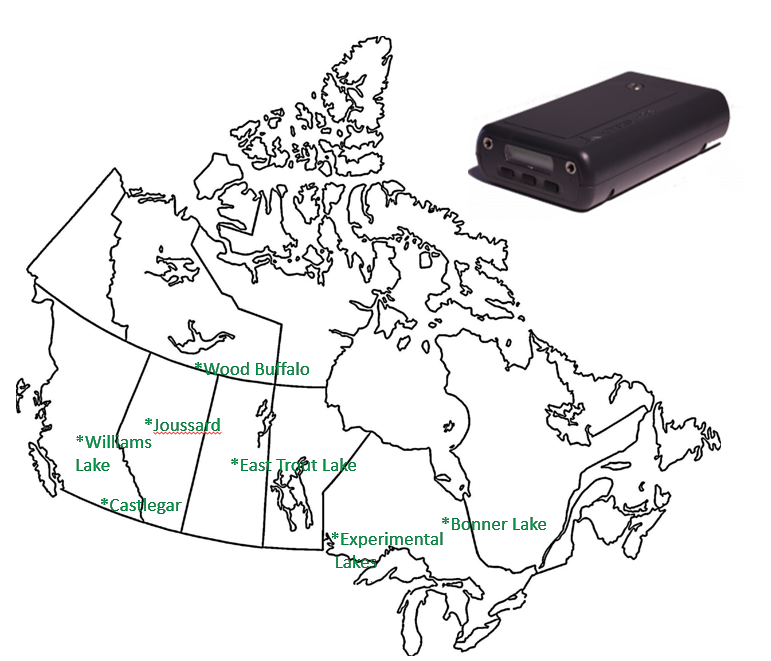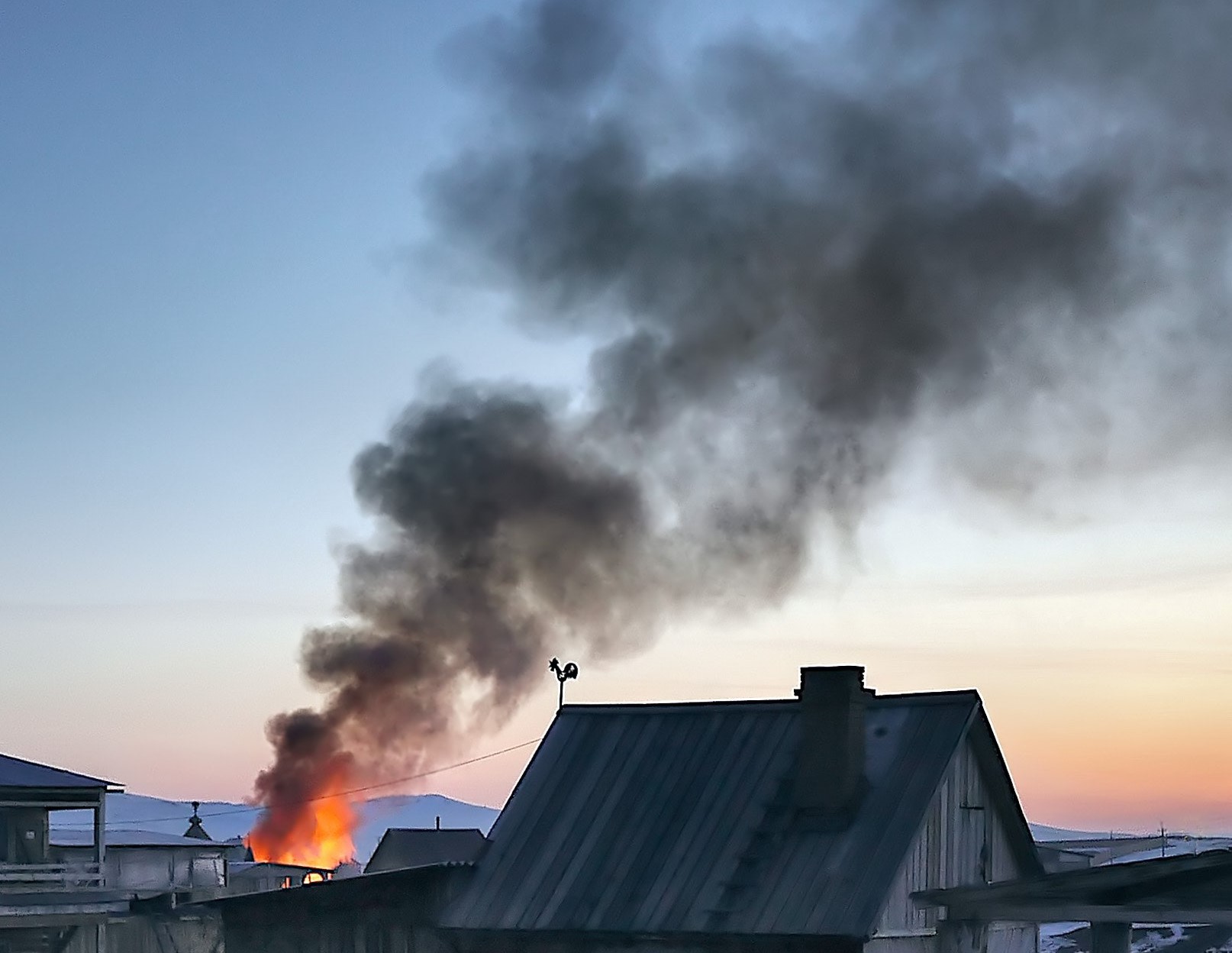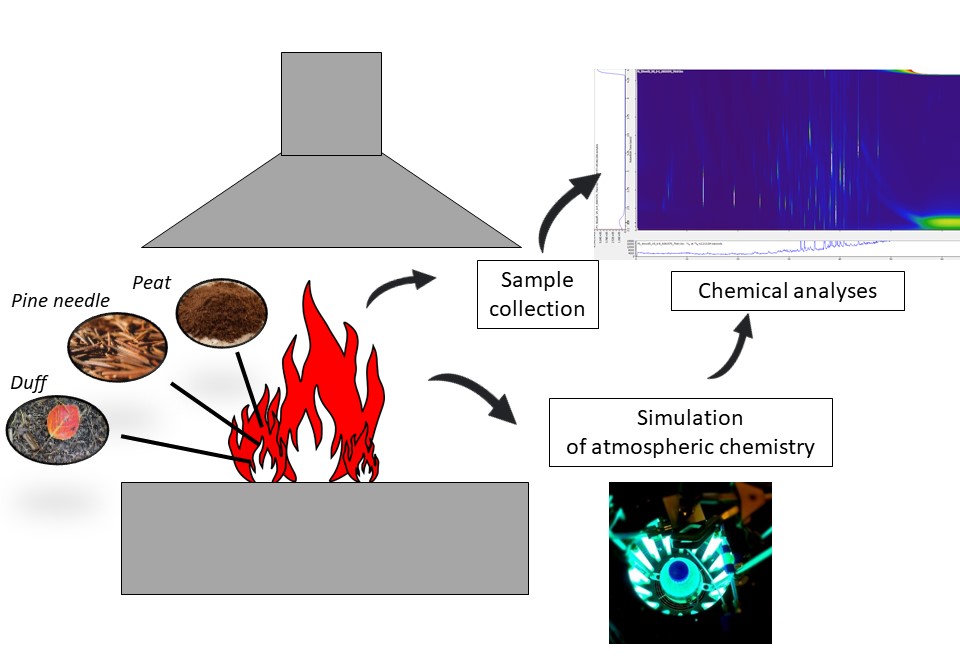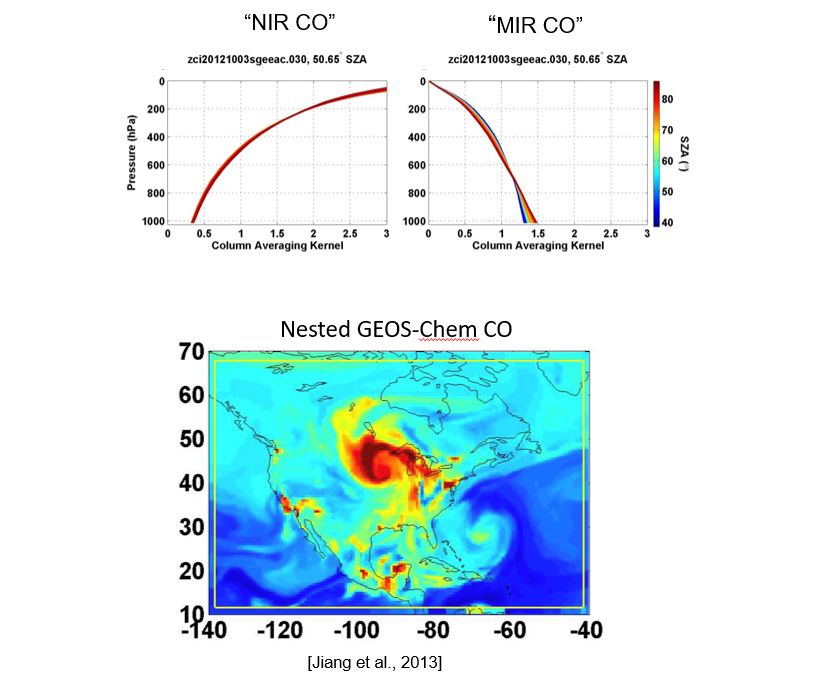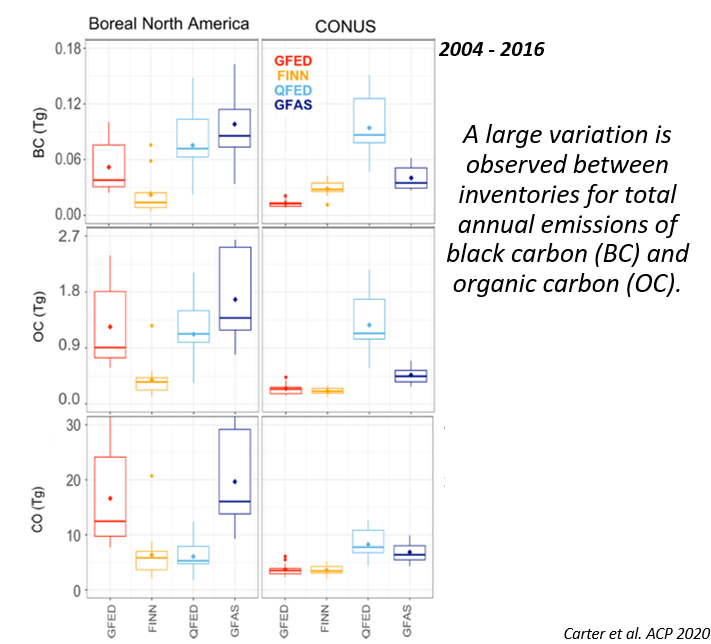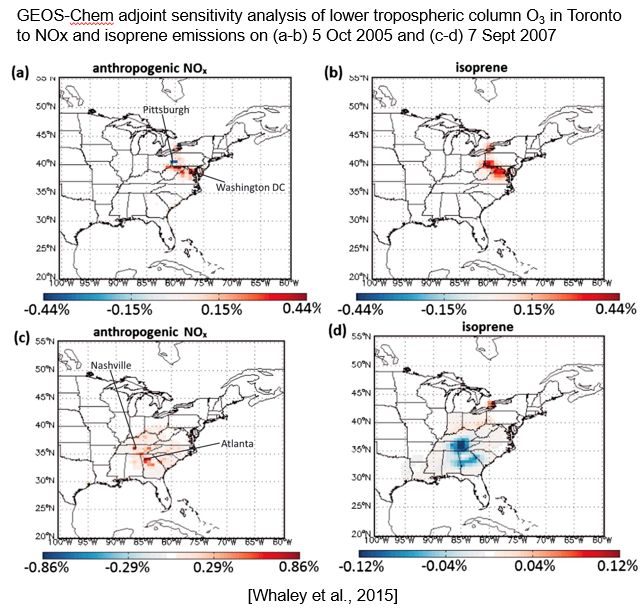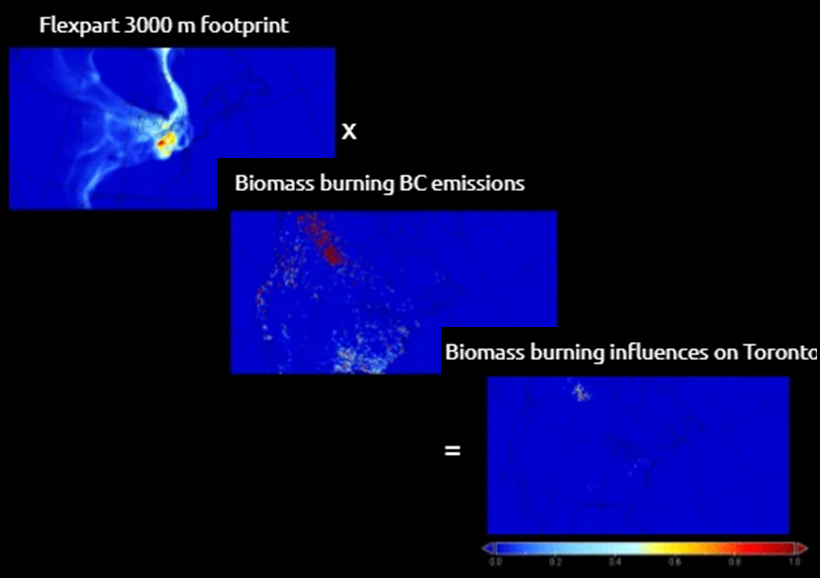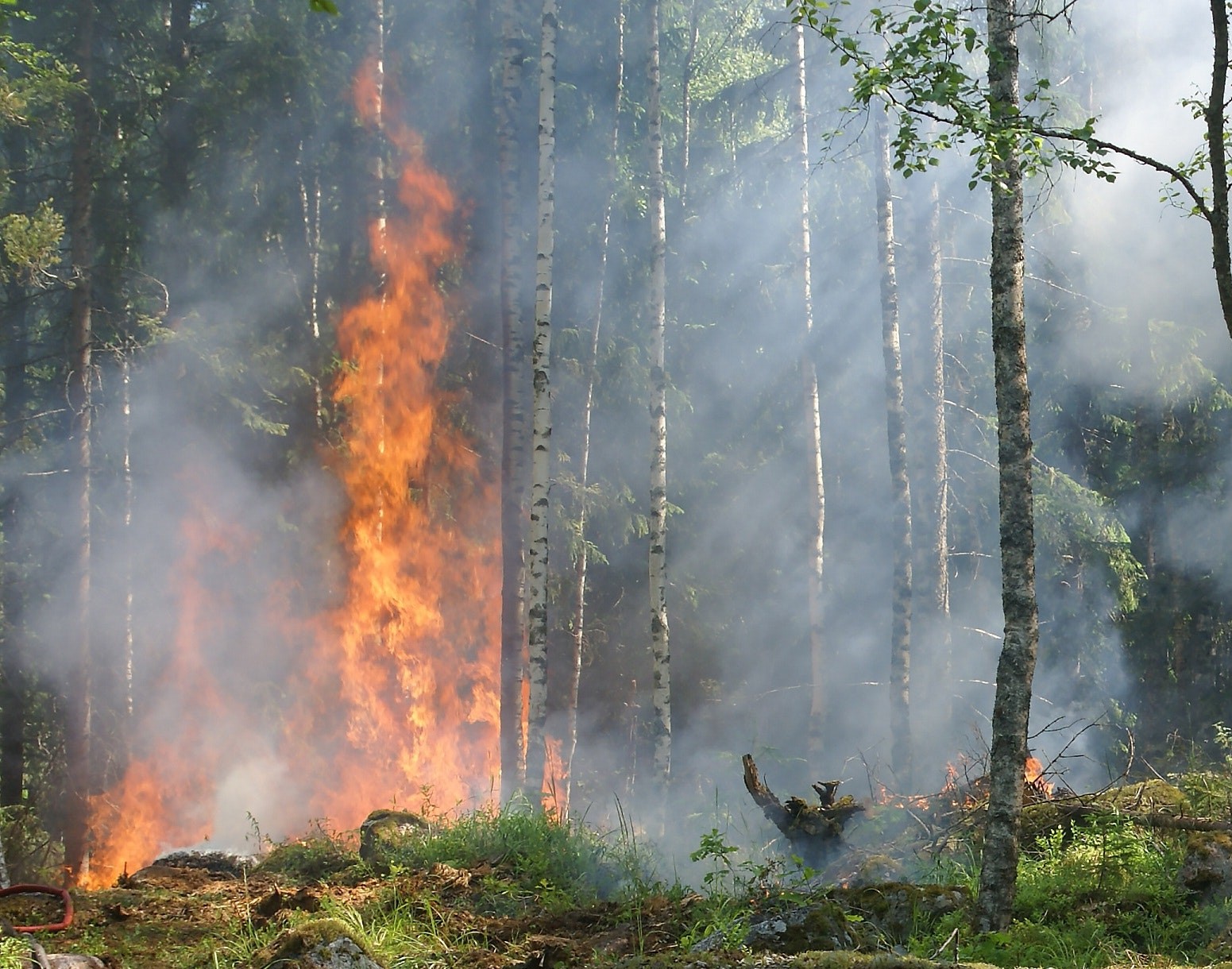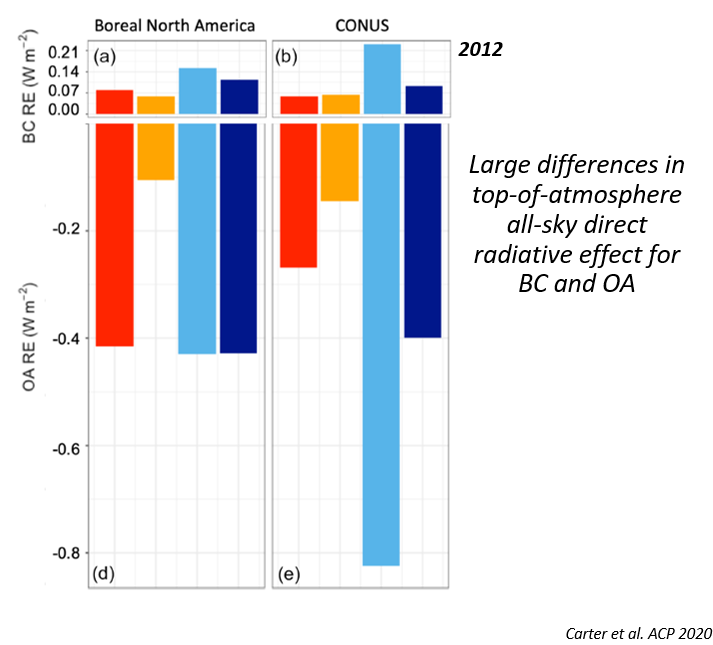A new research network focused on atmospheric impacts of biomass burning, using a combination of new measurements and modeling activities.
Funded in part by the Government of Canada’s Environmental Damages Fund, Biomass Burning in Canada (BBCan) intends to unite university scientists with many Canadian government partners to enable more comprehensive and accurate assessments of biomass burning (BB) atmospheric impacts and policy actions under consideration to mitigate climate change with nature-based solutions. This will occur by addressing key fundamental scientific uncertainties that limit our ability to develop an integrated approach that links net-zero emission goals to forest and air quality management strategies.
The specific objectives are to form a new Canadian research network that will:
i) make new atmospheric observations of greenhouse gases, black carbon (BC), and particulate matter (PM) mass during wildfire periods;
ii) measure BB emissions through analysis of atmospheric data and targeted laboratory-scale burning experiments;
iii) improve model representations of BB emission inventories and processes;
iv) determine the source regions that give rise to BB pollution, measure the potential for negative health outcomes caused by wildfire pollutants, and calculate radiative effects from BB emissions.
Black Carbon and Brown Carbon Particulate Matter (PM) Measurements
Enhance black carbon (BC) and brown carbon (BrC) measurements in remote areas with deployment of multiple 5-wavelength aethalometers. Aethalometers will be deployed at the Canadian Air and Precipitation Monitoring Network (CAPMoN) and other observation sites in collaboration with Environment and Climate Change Canada (ECCC).
Measurements of Human Exposure to Wildfire Smoke Particulate Matter
Given that we obtain most of our particulate inhalation exposure when indoors, and with the development of low cost sensors in the past few years, we will deploy a large number of low cost fine particulate matter (PM₂.₅) sensors in indoor environments in wildfire impacted regions in Western Canada with the goal to assess the level of exposure to wildfire PM₂.₅ relative to other sources of PM₂.₅
Observations at a Supersite in the Boreal Forest (East Trout Lake, SK)
Using the Total Carbon Column Observing Network (TCCON) site at East Trout Lake that measures CO₂, CO, CH₄, HCN, H₂CO, and many other atmospheric trace gases, enhancement ratios will be estimated using TCCON HCN, CO, and CH₄ data, and will be used to obtain constraints on the CO and CH₄ emission factors in the fires. Existing measurements will be augmented with weekly PM₂.₅ samples during wildfire seasons.
Emissions and Atmospheric Processing of Controlled Lab Burns
Determination of emission factors of fuels relevant to Canadian boreal forests and formation of secondary species from primary emissions to provide input to regional-scale chemical transport models. Measurements will include short-term climate forcers (black carbon, brown carbon), particle size distribution and mass concentration, gas-phase emissions (CO, CO₂, total carbon, SO₂, NOₓ, etc), organic carbon and elemental carbon (OC/EC), detailed chemical signatures, and optical properties.
Data Assimilation of Greenhouse Gas Measurements
The TCCON averaging kernel values differ significantly between weak (~NIR) and strong (~MIR) CO lines, providing information about the vertical distribution of CO. Data will be assimilated into a regional, version of the GEOS-Chem model to quantify wildfire emissions of CO and CH₄. The GEOS-Chem simulation will be compared to CanESM and GEM-MACH simulations to understand the influence of the prescribed emissions and model meteorology on the fires and their impact on the atmosphere.
Evaluating Emissions of Aerosols and VOCs
We will compare the performance of different atmospheric models and emission inventories for predicting aerosols and volatile organic compounds (VOCs) from biomass burning. Models to be evaluated include GEM-MACH, CanESM, and GEOS-Chem, using various emissions inventories. Case studies will be developed for model intercomparison using data already available, e.g. from the National Air Pollution Surveillance (NAPS) Program and measurement campaigns, and updates to the ECCC emission inventory CFFEPS will be proposed based on these evaluations as well as results from the controlled lab burns.
Black Carbon Climatology, Biomass Burning Aerosol Microphysical Processes
We will develop a decadal-scale climatology for Canada for particulate organic matter, elemental carbon and PM₂.₅ from biomass burning, using a synergy of measurements and model outputs, and then use it to evaluate models, including temporal and spatial trends. We will address key aerosol-process knowledge gaps to develop understanding of the impact of biomass burning particles on Canadian climate, air quality and health, using in-situ measurements and tools such as GEOS-Chem-TOMAS.
Ozone Formation Processes
We will use the adjoint of the nested GEOS-Chem model to carry out sensitivity analyses of O₃ to the model parameters to identify the key precursors responsible for the fire-related enhancements in O₃. High-resolution simulations using WRF-GEOS-Chem (WRF-GC) will be conducted in the vicinity of the fires to better capture the local chemistry associated with the plumes.
Biomass Burning Contributions to Black Carbon
This activity strives to understand the contribution of elemental carbon from biomass burning relative to fossil fuel combustion at key Canadian Aerosol Baseline Monitoring sites (e.g. Toronto, ETL), using tools such as FLEXPART to characterize seasonality, spatial differences, and trends. A sample calculation showing FLEXPART sensitivity map for Toronto, BC emissions from biomass burning and the total BB influence in Toronto is shown in the right.
Potential Toxicity of Wildfire Particulate Matter
Wildfire PM impacts human health more than equal doses of other PM types. We aim to answer what is in wildfire PM that makes it so toxic and how do these compounds initiate reactions that eventually lead to toxicity. We will characterize wildfire PM to identify potential toxicants and measure free radical production and antioxidant response (sources of oxidative stress)..
Radiative Effects
The direct and indirect radiative effects of biomass burning aerosols will be evaluated by simulating the intrinsic optical properties which determine the aerosol radiative properties. Simulations from the models CanESM, GEM-MACH and GEOS-Chem will be compared and evaluated relative to observations, as well as to each other. We will evaluate future climate response to increased fire activity using a series of sensitivity studies where emissions are increased relative to a base case.




